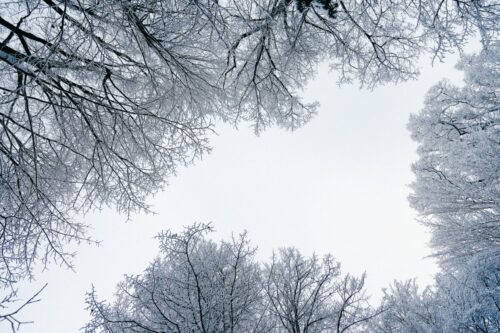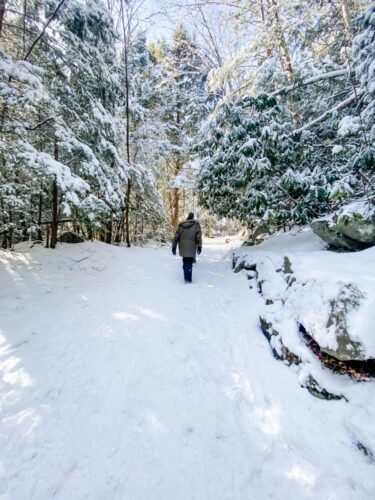How Do Trees Survive the Winter?
February 3, 2022 10:17 am

By Cory Swift-Turner, DOF Public Information Specialist
–
Have you ever looked at a tree covered in snow and wondered, how do trees survive cold winters? Trees face several challenges to their survival in the winter, including scarce liquid water, freezing temperatures and strong winds. To meet these challenges, trees have developed a number of adaptations to help them make it to the next spring.

Since the harsh, dry conditions of winter are not conducive to growth, many trees enter a form of hibernation in the winter called dormancy. For deciduous trees, the first step of dormancy begins when they drop their leaves in the fall. This is also known as abscission, and trees do it to conserve water and energy. Since trees are not growing during dormancy, they don’t need their leaves for photosynthesis, and they can avoid water loss by dropping them. Without leaves on their branches, deciduous trees are also able to better withstand the winds of winter storms.
Most conifer trees, on the other hand, have needles that they keep year-round. Needles retain water the tree needs to survive, due to their smaller surface area, waxy-coating, and resin that resists cold temperatures. Because of these unique properties, conifer trees do not enter a full dormancy in the winter like deciduous trees. This is also why conifers can still thrive in the harsher, northernmost climates.

Bark is another important protection trees have. This first layer of defense insulates and protects a tree by preventing it from drying out, while also keeping ice and snow out.
Still not impressed? Trees have also evolved two ways to resist internal freezing at a cellular level. One is to produce a natural sort of antifreeze by converting starches into sugars within their cells. When the cells are inundated with the sugar concentration, they have a lower freezing point. As trees enter dormancy, they also make their cell membranes more pliable, osmotically moving water out of their cells and into the pockets between the cells, where it is less likely to damage the tree if it does freeze. However, sometimes temperatures drop so low or so quickly that the sap inside trees freezes and expands. This can create high pressure that sometimes must be released, resulting in a rupture in the tree. This is often accompanied by a loud crack or snapping sound. Occasionally, pressure can build up enough that it makes a small explosion!

Trees are some of the oldest organisms on Earth and have evolved over the centuries to resist many threats to their survival. Still, trees can benefit greatly from routine maintenance to help them thrive. For example, on warm winter days, trees can benefit from a periodic deep soaking. Visit the Virginia Department of Forestry’s urban and community forestry page to learn more about tree maintenance.
Tags: Hardwood, tree biology
Category: Education
